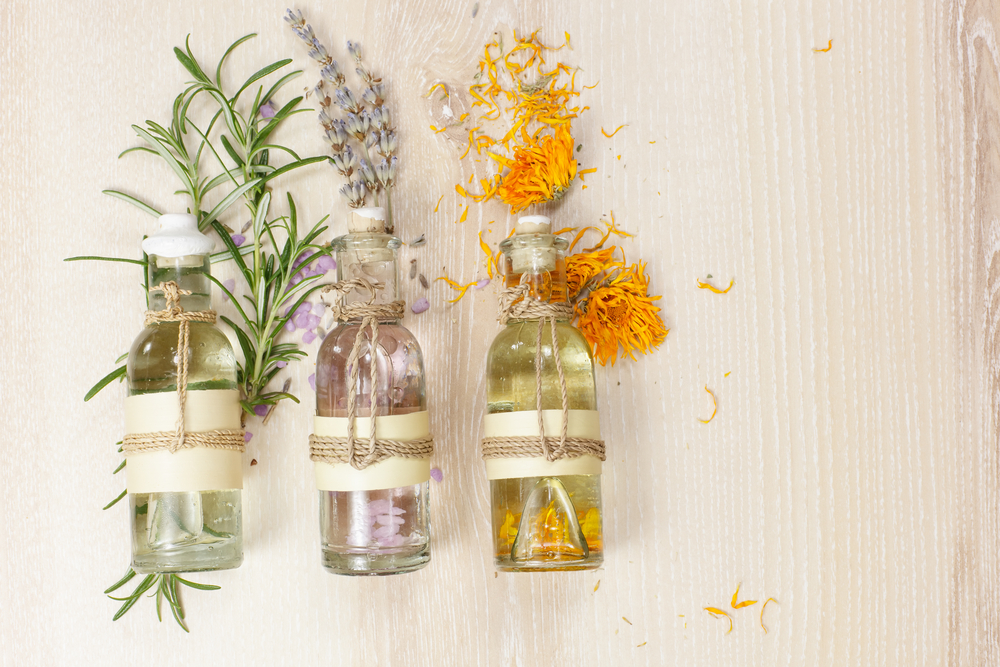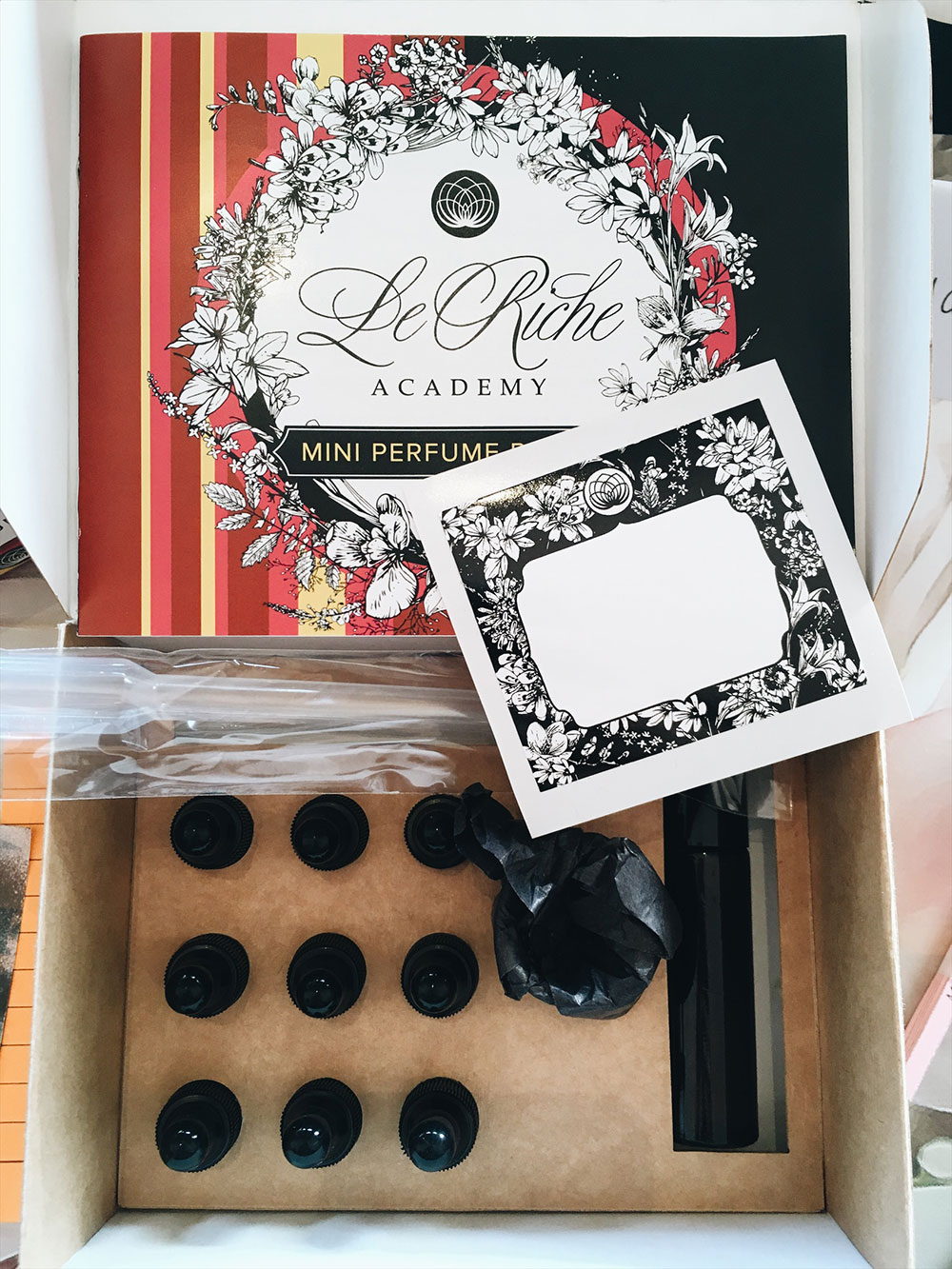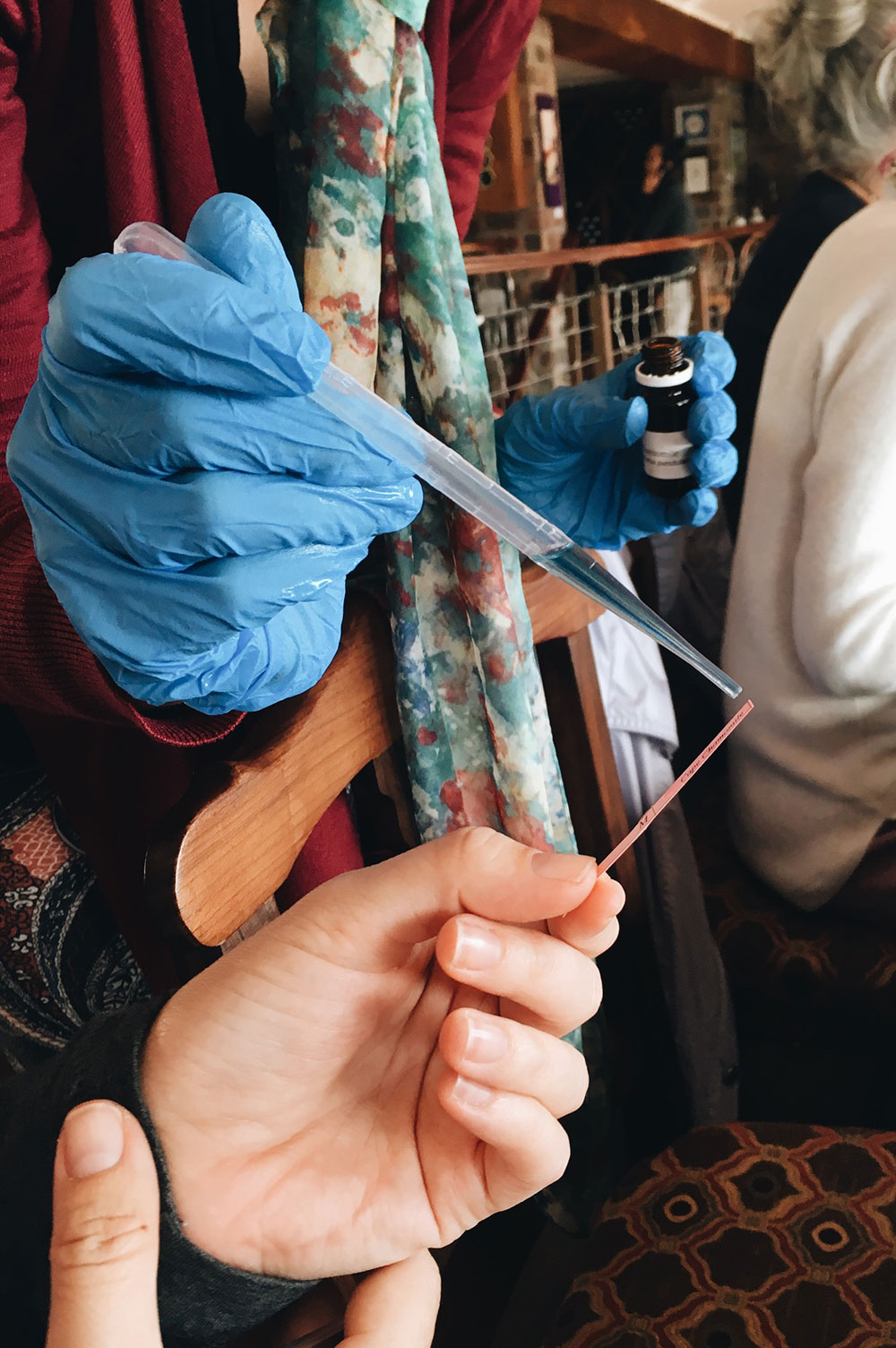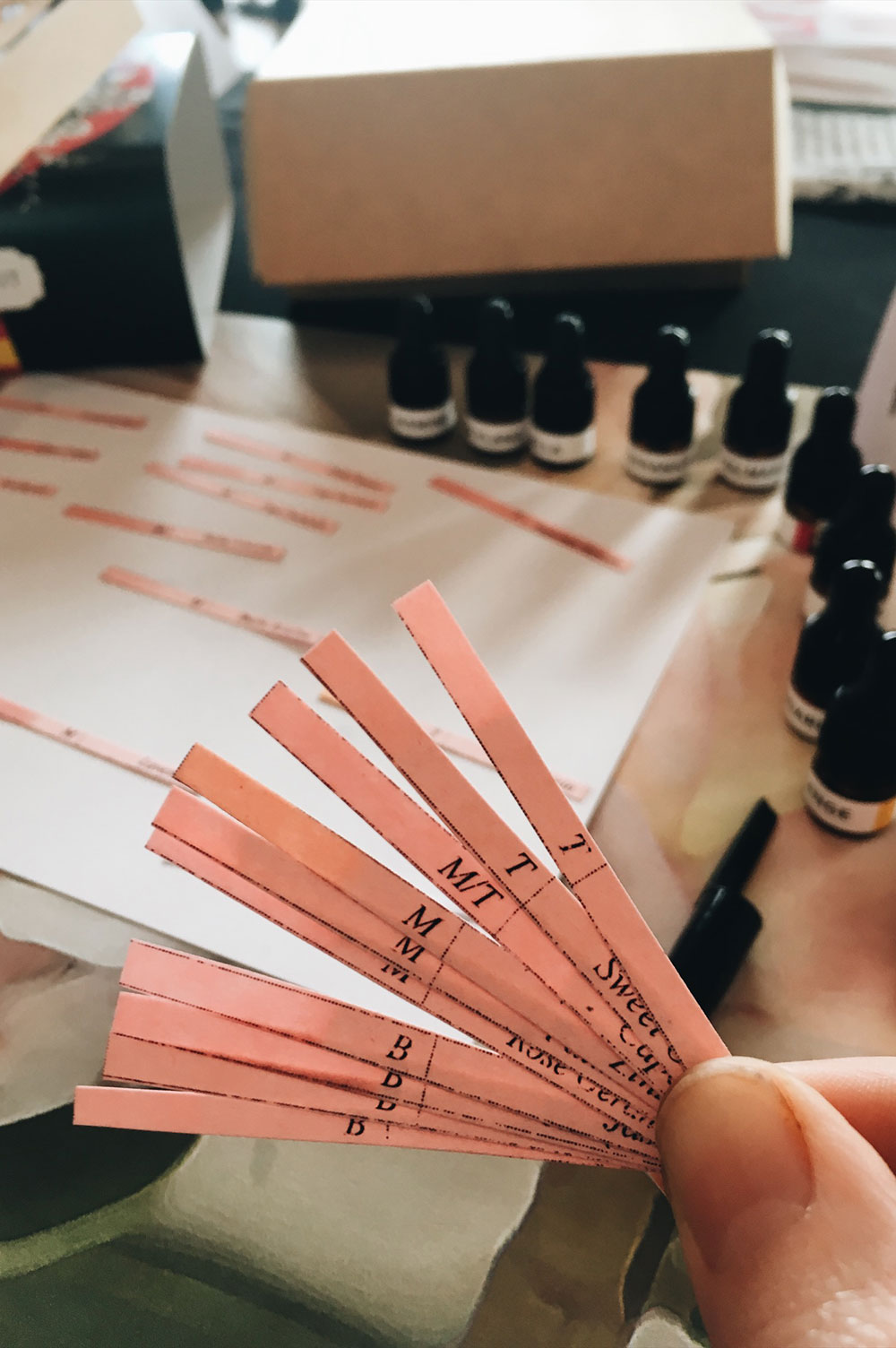
26 Jun Q&A with Le Riche Naturals: Making Your Own Perfume with Essential Oils
If you’ve been blessed with a super sensitive olfactory system, chances are pretty good that finding the perfect perfume is an almost impossible feat. Here’s an idea: why not make your own? Hand-mixing fragrances, using essential oils is a simple, enjoyable and highly therapeutic process that could become your new favourite hobby!
Since I recently found myself between fragrances, I decided it was the perfect opportunity to try my hand at blending one of my own and joined Le Riche Naturals for a delightful perfume-making workshop in Pringle Bay. Over the course of a morning – dotted with delicious tea and wholesome snacks – owner and main perfumer, Lushinka Louw guided us through the basic steps of her craft.
To get things going, we each received a beautiful Le Riche Naturals Perfume Kit containing 9 petite essential oils, a little glass beaker, a pipette, some smelling strips and a booklet with all the necessary information, as well as a basic perfume recipe.
Apart from this, she also had an array of indigenous essential oils, such as Buchu, Namibian Myrrh, Cape May and Kooigoed, we could add to our concoctions.
Once she’d explained the basics of layering – starting with at least three long-lasting base notes to provide a strong foundation for our perfumes, followed by a few mild middle notes and culminating in an impactful, but fleeting top note or three – we all set to work creating our own fragrances.
And the most amazing thing happened! Without any prior experience, each person produced a unique perfume that not only seemed to suit their own essence but also pleased the senses of those around them.
My friend, Erica, found herself attracted to Buchu and created a magical green fragrance, while another woman at the far end of the table embarked on a mission to create a scent as close to Rose as possible. There were spicy whiffs reminiscent of Christmas cakes and gluhwein and wafts of musk that lingered in the nostrils.
Personally, I found myself reaching for florals – jasmine and ylang-ylang, palmarosa and rose geranium – citrus – sweet orange and mandarin – earthy tones, like Mopani and myrrh. Starting off with one drop of each essential oil, I let my senses guide me, adding more of some and holding back on others.
The outcome was astounding: the fragrance I never knew I wanted but have always craved.

Le Riche Naturals Perfume Kit
Thoroughly hooked, I wanted to find out more about this enchanting art and pinned Lushinka down for a little Q&A:
-
What first sparked your interest in perfume?
It wasn’t a specific event, but there were three things that inspired me to take up the challenge. Firstly, I formulated skin care products where a gorgeous fragrance along with skin care benefits was very important for the appeal of the products. I was already very involved in fragrance creation.
Secondly, a friend of mine did a course in perfumery and started making her own perfumes. She now has her own perfume and scented candle range in the UK. We enjoyed supporting each other and often had our stalls next to each other at markets. I’d say that a bit of her enthusiasm rubbed off on me!
Lastly, I moved to the beautiful Pringle Bay, in the Kogelberg Biosphere and was completely inspired by the fragrance of sun-baked fynbos. It seemed to me like a world of unique fragrances here on my doorstep and I simply had to explore. I had to research.
Maybe, I should mention that I love libraries with a very special passion. When you enter a top library with a burning question, you have the tools to get it answered from many angles. Being curious has been a gift that has enabled me to make something of the inspiration. It is what took me beyond only being interested.
- How does one determine which oils should be used for top notes, middle notes and base notes?
There is more than one way to determine this, but I think the best guideline for me has been the W.A. Poucher’s classification of top, middle and base notes according to their rate of evaporation.
Basically, top notes (or head notes) evaporate quickly. These capture your attention but they are fleeting.
Middle notes (or heart notes) has to do with the impression the perfume gives you.
The base notes can take up to 24 hours to evaporate and gives the lingering fragrance to the perfume. A perfume needs sufficient base notes to have good longevity, so I regard it as the foundation of a perfume.

- What is the first fragrance you ever made? Your favourite fragrance from the Le Riche range?
The first fragrance I ever made was the essential oil blend I use in the Regenerating Night Balm. It’s a firm favourite to this day. It’s amazing for your skin and smells divine.
My favourite perfume is Épicer (it means “to spice” in French). I developed the concept for it while blending a fragrance for a friend’s birthday with the help of my son. It took another year-and-a-half to refine it to what it is today. I love wearing it and it suits me very well, but I don’t wear it often. It’s a blend with a lot of aphrodisiac essential oils.
My husband notices immediately, but I’ve also had feedback from other ladies (and a man) who wears Épicer. The cutest one was from the designer that does all our branding, “I was pushing my trolley in the shop when this man started following me. I thought he was stalking me and I was getting worried. Then at the tills, he only wanted to tell me that I smell amazing and he left. He was just following the scent.”
We had a good laugh, but she’s convinced that it’s very aphrodisiac. Her only complaint is that you can’t pick who it works on! Then, of course, the frangipani absolute in Épicer is one of my favourite essential oils ever.
-
Do you have an easy recipe you could share with Faithful to Nature readers to get into making their own fragrances with essential oil?
To create your own frangrance combine one drop each of:
- Base notes:
Vanilla absolute (10% dilution), Ylang-ylang, Jasmin absolute (10% dilution)
- Middle notes:
Palmarosa, Rose Geranium, Lavender
- Top notes:
Sweet Orange, Mandarin, Neroli.
Then you adjust the fragrance by adding a drop or two more of your favourite essential oil from above until you get a fragrance that pleases you. Mix it with at least 5ml – 10ml fragrance free carrier oil, depending on how sensitive your skin is.
-
Could you give a few reasons why it’s worth making your own natural fragrance or purchasing a natural fragrance, as opposed to buying those commercially available?
- If commercial perfumes make you feel nauseous or headachy, mixing your own natural fragrances would be a great idea. You can then wear a fragrance that is comfortable and pleasing to you.
- You can make different fragrances for every mood, and even use it to improve your mood.
- There might be a cost saving if you make simple fragrances, but I would say ease of use and versatility is great. You can carry small bottles of your perfume with you everywhere!
- It’s a very satisfying creative activity and improves your self-esteem.
- We do a great perfume workshop to help you get started and you get to take your tools home, so it’s fun and easy to get empowered with a new skill.
If you’re interested in doing a workshop yourself, visit the Le Riche Naturals website to get in touch with Lushinka. In the meantime, you can start experimenting on your own by buying a DIY Perfume Kit right here!




Pingback:Scent-sational and Simple Body Mist Recipes | Faithful To Nature
Posted at 15:46h, 03 October[…] Q&A with Le Riche Naturals: Making Your Own Perfume with Essential Oils […]